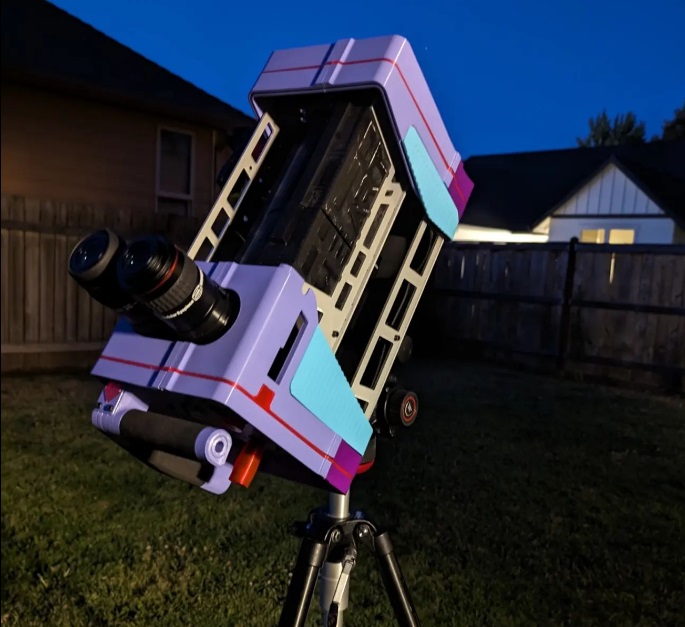A new project promises to ‘bring back the magic’ to night sky observing.
When it comes to deep sky observing versus portability, we’ve all been there. How do you balance the trade-off between big complicated optics, with something basic and simple to use? We’ll make a small confession: while big light bucket optics have their place in astronomy, only binoculars give you a true view of the sky.
Why Binoculars in Astronomy
To be honest, I’ve used telescopes of all kinds large and small over the years… but still find myself using binoculars for casual sky watching 90% of the time. This is especially true traveling, where a set of binoculars can simply fit in carry-on luggage.
A fascinating do-it-yourself project kit was just announced courtesy of Robert Asumendi at Analog Sky. We wrote about Analog Sky’s giant binocular Sky Drifter project a few years back. Unfortunately Sky Drifter was (like so many things) put on hold during the pandemic. Now, Analog Sky is back with Magic, a project to kit build a small, highly portable box-style astronomy binoculars.
“Magic combines the best features of binoculars and telescopes,” Robert Asumendi (Analog Sky) told Universe Today. “That creates a new way to explore the sky, and learn the sky by exploring.”
Making Magic
The introductory course for Magic costs only a one-time fee of 39.99$. You can approach building Magic one of three ways. By 3D printing most of the parts from specs (excluding optics), order the parts from suggested suppliers, or a hybrid approach of the two methods.
What you’ll build is a small box-style binocular telescope, with a right angle-viewer to look down in. Magic is reminiscent of the old bench top Project Moonwatch viewers, used by volunteer satellite spotters back in the 1960s.

Using Magic
Magic is easy to use, and would work great for terrestrial viewing and bird-watching as well. The diopter eyepiece spacing is quickly and easily adjusted, enabling users to easily hand-off the view from one observer to another. I can see a big benefit of sharing the view with these, a rarity for binoculars.
“It’s very compact and lightweight, under 10 pounds including the tripod so you can leave it set up for quick front porch sessions,” says Asumendi. “Even young kids can carry it outside on their own.”
Magic can be upgraded with the addition of filters, and the setup will include a 4-milliwatt laser pointer for aiming, and a foldout 1x finder as a backup. Handy, for regions such as the European Union where unlicensed laser pointers are restricted to 1 milliwatt.

The cost to build Magic is a little over $300 if you 3D print the parts to $400 if you outsource the printing, totaling around $500 if you use the recommended tripod. Not bad, considering that you can pay up to a thousand dollars for a high quality pair of astronomical binoculars.
“Of course, it’s up to you when you buy each component, and the components list makes for great gift ideas,” says Asumendi. “Wouldn’t it be cool for someone to build their binoculars from parts gifted by friends and family?”

Technical Specs for Magic
Magic is built around 50mm aperture, 182mm focal length (f/3.6) optics, yielding a zoomed in view of two degrees (about four times the size of a Full Moon) to a generous rich-field 14 degree view, great for sweeping down the plane of the star-rich Milky Way.
Only binoculars can give you a true view of the sky. In an era of screen-time burnout, Analog’s Magic offers a family project to get back to basics, and an innovative way to enjoy the night sky together.

